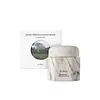What's inside
What's inside
 Key Ingredients
Key Ingredients

 Benefits
Benefits

 Concerns
Concerns

 Ingredients Side-by-side
Ingredients Side-by-side

Nelumbo Nucifera Flower Extract
Skin ConditioningGlycerin
HumectantPentylene Glycol
Skin ConditioningDipropylene Glycol
HumectantHydrogenated Polyisobutene
EmollientNiacinamide
SmoothingPrunus Amygdalus Dulcis Oil
Skin ConditioningXylitylglucoside
HumectantXylitol
Humectant1,2-Hexanediol
Skin ConditioningCaprylic/Capric Triglyceride
MaskingWater
Skin ConditioningSodium Polyacryloyldimethyl Taurate
Emulsion StabilisingPanthenol
Skin ConditioningCetearyl Olivate
Hydrogenated Polydecene
EmollientSorbitan Olivate
EmulsifyingHydroxyacetophenone
AntioxidantHydroxyethylcellulose
Emulsion StabilisingAllantoin
Skin ConditioningTrideceth-10
CleansingAnhydroxylitol
HumectantGlucose
HumectantNelumbo Nucifera Flower Extract, Glycerin, Pentylene Glycol, Dipropylene Glycol, Hydrogenated Polyisobutene, Niacinamide, Prunus Amygdalus Dulcis Oil, Xylitylglucoside, Xylitol, 1,2-Hexanediol, Caprylic/Capric Triglyceride, Water, Sodium Polyacryloyldimethyl Taurate, Panthenol, Cetearyl Olivate, Hydrogenated Polydecene, Sorbitan Olivate, Hydroxyacetophenone, Hydroxyethylcellulose, Allantoin, Trideceth-10, Anhydroxylitol, Glucose
Water
Skin ConditioningCaprylic/Capric Triglyceride
MaskingGlycerin
HumectantButylene Glycol
HumectantCetearyl Alcohol
EmollientPolyglyceryl-3 Methylglucose Distearate
EmulsifyingCyclopentasiloxane
EmollientPolysorbate 60
EmulsifyingGlyceryl Stearate
EmollientPalmitic Acid
Emollient1,2-Hexanediol
Skin ConditioningCyclohexasiloxane
EmollientDimethicone
EmollientBenzyl Glycol
SolventStearic Acid
CleansingSorbitan Sesquioleate
EmulsifyingEthylhexylglycerin
Skin ConditioningCarbomer
Emulsion StabilisingArginine
MaskingSodium Polyacrylate
AbsorbentIsopentyldiol
HumectantTocopheryl Acetate
AntioxidantAllantoin
Skin ConditioningPropanediol
SolventDipotassium Glycyrrhizate
HumectantPolyglyceryl-4 Oleate
EmulsifyingDisodium EDTA
Hydrolyzed Corn Starch
HumectantSucrose Palmitate
EmollientDipropylene Glycol
HumectantLeontopodium Alpinum Extract
Skin ConditioningLauric Acid
CleansingHydroxydecyl Ubiquinone
AntioxidantSucrose
HumectantMyristic Acid
CleansingCitrus Aurantium Bergamia Fruit Oil
MaskingAnastatica Hierochuntica Extract
AstringentButyrospermum Parkii Butter
Skin ConditioningHydrolyzed Collagen
EmollientSilk Extract
Skin ConditioningSalmon Egg Extract
Beta-Glucan
Skin ConditioningAdansonia Digitata Fruit Extract
EmollientHydrolyzed Glycosaminoglycans
HumectantSodium Hyaluronate
HumectantSodium Hyaluronate Crosspolymer
HumectantCopper Tripeptide-1
Skin ConditioningHydrolyzed Hyaluronic Acid
HumectantAcetyl Hexapeptide-8
HumectantHydroxypropyltrimonium Hyaluronate
Hyaluronic Acid
HumectantSodium Acetylated Hyaluronate
HumectantWater, Caprylic/Capric Triglyceride, Glycerin, Butylene Glycol, Cetearyl Alcohol, Polyglyceryl-3 Methylglucose Distearate, Cyclopentasiloxane, Polysorbate 60, Glyceryl Stearate, Palmitic Acid, 1,2-Hexanediol, Cyclohexasiloxane, Dimethicone, Benzyl Glycol, Stearic Acid, Sorbitan Sesquioleate, Ethylhexylglycerin, Carbomer, Arginine, Sodium Polyacrylate, Isopentyldiol, Tocopheryl Acetate, Allantoin, Propanediol, Dipotassium Glycyrrhizate, Polyglyceryl-4 Oleate, Disodium EDTA, Hydrolyzed Corn Starch, Sucrose Palmitate, Dipropylene Glycol, Leontopodium Alpinum Extract, Lauric Acid, Hydroxydecyl Ubiquinone, Sucrose, Myristic Acid, Citrus Aurantium Bergamia Fruit Oil, Anastatica Hierochuntica Extract, Butyrospermum Parkii Butter, Hydrolyzed Collagen, Silk Extract, Salmon Egg Extract, Beta-Glucan, Adansonia Digitata Fruit Extract, Hydrolyzed Glycosaminoglycans, Sodium Hyaluronate, Sodium Hyaluronate Crosspolymer, Copper Tripeptide-1, Hydrolyzed Hyaluronic Acid, Acetyl Hexapeptide-8, Hydroxypropyltrimonium Hyaluronate, Hyaluronic Acid, Sodium Acetylated Hyaluronate
 Reviews
Reviews

Ingredients Explained
These ingredients are found in both products.
Ingredients higher up in an ingredient list are typically present in a larger amount.
1,2-Hexanediol is a synthetic liquid and another multi-functional powerhouse.
It is a:
- Humectant, drawing moisture into the skin
- Emollient, helping to soften skin
- Solvent, dispersing and stabilizing formulas
- Preservative booster, enhancing the antimicrobial activity of other preservatives
Allantoin is a soothing ingredient known for its protective and moisturizingg properties. Because of this, it is often added to products with strong active ingredients.
Studies show higher concentrations of this ingredient can promote wound healing.
Though it can be derived from the comfrey plant, allantoin is produced synthetically for cosmetic products to ensure purity.
Learn more about AllantoinThis ingredient is an emollient, solvent, and texture enhancer. It is considered a skin-softener by helping the skin prevent moisture loss.
It helps thicken a product's formula and makes it easier to spread by dissolving clumping compounds.
Caprylic Triglyceride is made by combining glycerin with coconut oil, forming a clear liquid.
While there is an assumption Caprylic Triglyceride can clog pores due to it being derived from coconut oil, there is no research supporting this.
Learn more about Caprylic/Capric TriglycerideDipropylene Glycol is a synthetically created humectant, stabilizer, and solvent.
This ingredient helps:
Dipropylene glycol is technically an alcohol, but it belongs to the glycol family (often considered part of the ‘good’ alcohols). This means it is hydrating and gentle on skin unlike drying solvent alcohols like denatured alcohol.
As a masking agent, Dipropylene Glycol can be used to cover the smell of other ingredients. However, it does not have a scent.
Studies show Dipropylene Glycol is considered safe to use in skincare.
Learn more about Dipropylene GlycolGlycerin is already naturally found in your skin. It helps moisturize and protect your skin.
A study from 2016 found glycerin to be more effective as a humectant than AHAs and hyaluronic acid.
As a humectant, it helps the skin stay hydrated by pulling moisture to your skin. The low molecular weight of glycerin allows it to pull moisture into the deeper layers of your skin.
Hydrated skin improves your skin barrier; Your skin barrier helps protect against irritants and bacteria.
Glycerin has also been found to have antimicrobial and antiviral properties. Due to these properties, glycerin is often used in wound and burn treatments.
In cosmetics, glycerin is usually derived from plants such as soybean or palm. However, it can also be sourced from animals, such as tallow or animal fat.
This ingredient is organic, colorless, odorless, and non-toxic.
Glycerin is the name for this ingredient in American English. British English uses Glycerol/Glycerine.
Learn more about GlycerinWater. It's the most common cosmetic ingredient of all. You'll usually see it at the top of ingredient lists, meaning that it makes up the largest part of the product.
So why is it so popular? Water most often acts as a solvent - this means that it helps dissolve other ingredients into the formulation.
You'll also recognize water as that liquid we all need to stay alive. If you see this, drink a glass of water. Stay hydrated!
Learn more about Water